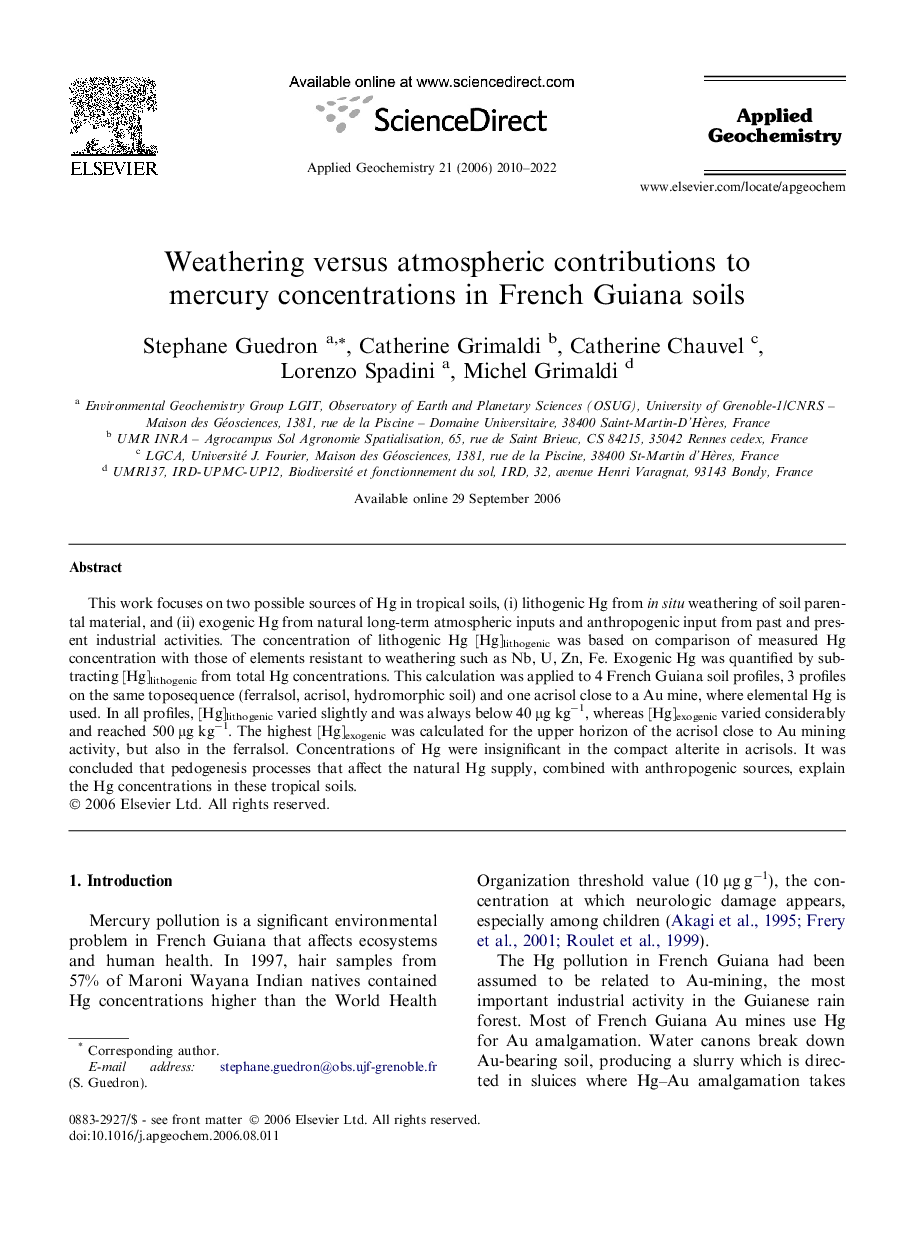| Article ID | Journal | Published Year | Pages | File Type |
|---|---|---|---|---|
| 4436917 | Applied Geochemistry | 2010 | 13 Pages |
This work focuses on two possible sources of Hg in tropical soils, (i) lithogenic Hg from in situ weathering of soil parental material, and (ii) exogenic Hg from natural long-term atmospheric inputs and anthropogenic input from past and present industrial activities. The concentration of lithogenic Hg [Hg]lithogenic was based on comparison of measured Hg concentration with those of elements resistant to weathering such as Nb, U, Zn, Fe. Exogenic Hg was quantified by subtracting [Hg]lithogenic from total Hg concentrations. This calculation was applied to 4 French Guiana soil profiles, 3 profiles on the same toposequence (ferralsol, acrisol, hydromorphic soil) and one acrisol close to a Au mine, where elemental Hg is used. In all profiles, [Hg]lithogenic varied slightly and was always below 40 μg kg−1, whereas [Hg]exogenic varied considerably and reached 500 μg kg−1. The highest [Hg]exogenic was calculated for the upper horizon of the acrisol close to Au mining activity, but also in the ferralsol. Concentrations of Hg were insignificant in the compact alterite in acrisols. It was concluded that pedogenesis processes that affect the natural Hg supply, combined with anthropogenic sources, explain the Hg concentrations in these tropical soils.
